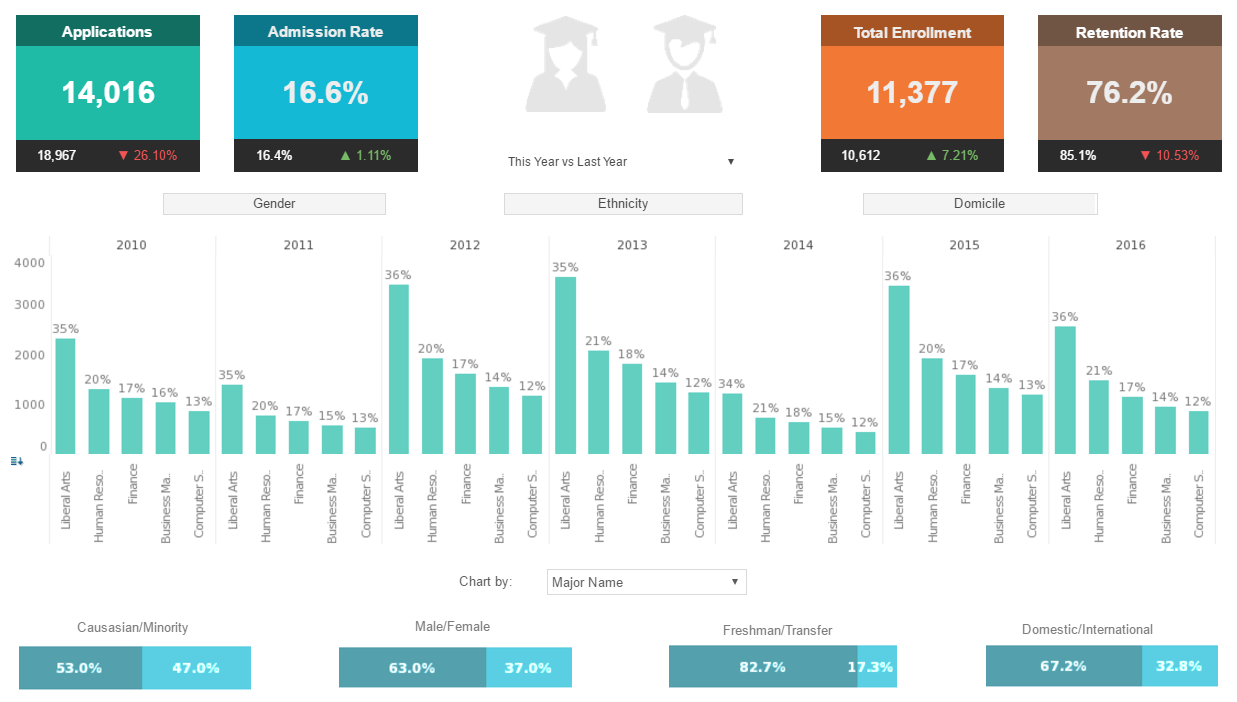The Need to Aggregate Information from Multiple Sources
This is the continuation of the transcript of a Webinar hosted by InetSoft on the topic of "Agile BI: How Data Virtualization and Data Mashup Help" The speaker is Mark Flaherty, CMO at InetSoft.
We will come and take a look at that. But even here, it's important to recognize that there are some BI applications that are truly analytic or data mining in nature. For instance you might be trying to find patterns of purchase behavior among customers to get a strategic understanding of customers.
In this case you really need to mine lots of lots of transactional data or click-stream data in a warehouse. This contrasts to reporting dashboards or operational business intelligence, which is not analytically heavy, but it still needs to aggregate information from multiple sources.
You will see that that distinction is somewhat important because today people are using replication based strategies to serve a lot of business intelligence work, but in reality much of this kind of work can actually be done through virtualization saving cost and time plus giving you the ability to deliver faster changes to the product.
So having said that, it’s not an either/or question. You can store the same kind of data if you replace this with MDM, and we will see that shortly.
| #1 Ranking: Read how InetSoft was rated #1 for user adoption in G2's user survey-based index | Read More |
Virtualization Serves That BI Dashboard
You could have some of information in a master data or a customer master but a lot of the rest of the information is being brought together through virtualization to eventually serve that BI dashboard. What data virtualization can do is either supplement or in some cases replace the need for physical replication and therefore provide virtualized data marts for reporting and dashboarding.
The data mashup platform can provide contextual information to support transactions in the process world or customer service world. Information that’s gathered and presented for reporting could be abstracted away into another kind of review and provide, for example, a backdrop to customer service, to provide let's say up-sell, cross-sell marketing intelligence. An example is to be able to manage analysis of customers viewing patterns on cable television in order to match that with product data in order to propose upgrade packages to customer service representatives.
I am getting a little ahead of myself, so what I am going to do is now is use this example as the launching point to start talking about use cases for data mashup. We have found different ways of thinking about use cases. On the previous slide, we talked about informational applications and transactional applications. In this slide, we have picked out the four top uses for data virtualization based on our 15-plus years of expertise in this area.
 |
View live interactive examples in InetSoft's dashboard and visualization gallery. |
Dashboards Using Virtual Data Marts
Generally speaking, agile business intelligence is a key area where real-time reporting, performance dashboards using virtual data marts, either instead of, or as a way of extending the enterprise data warehouse, or in fact, to create a virtual data warehouse. These are common goals. We are talking about orders of magnitudes in better speed, flexibility and lower costs in terms of building those options compared to traditional methods.
We are not going to completely replace the need for certain data mining requirements. You will still want that, but a lot of work can be accomplished with much less money. And competitive and social BI, this is gaining popularity. Typical traditional data integration tools are simply not capable of dealing with that. When it comes to customer focus, providing a 360 degree view of the customer and the feeding that into self-service portal, is another challenge for traditional BI tools.
There is a whole class of applications can be enabled through a data virtualization platform like ours. With it you can access Web data in a two-way Web automation, such as a cloud-based SaaS application with no API, or data aggregation from the Web, such as reputation monitoring, or things like that. And then finally all of these are projects that often a starting point for build a data services capability. Here a data mashup tool can provide logical abstraction for migration and creation of the virtual data layer. This becomes an enterprise kind of a capability. So let’s go through a few applications in each case.
| Previous: The First Step in a Data Virtualization Process |
Next: Examples of
Data Mashups
|


